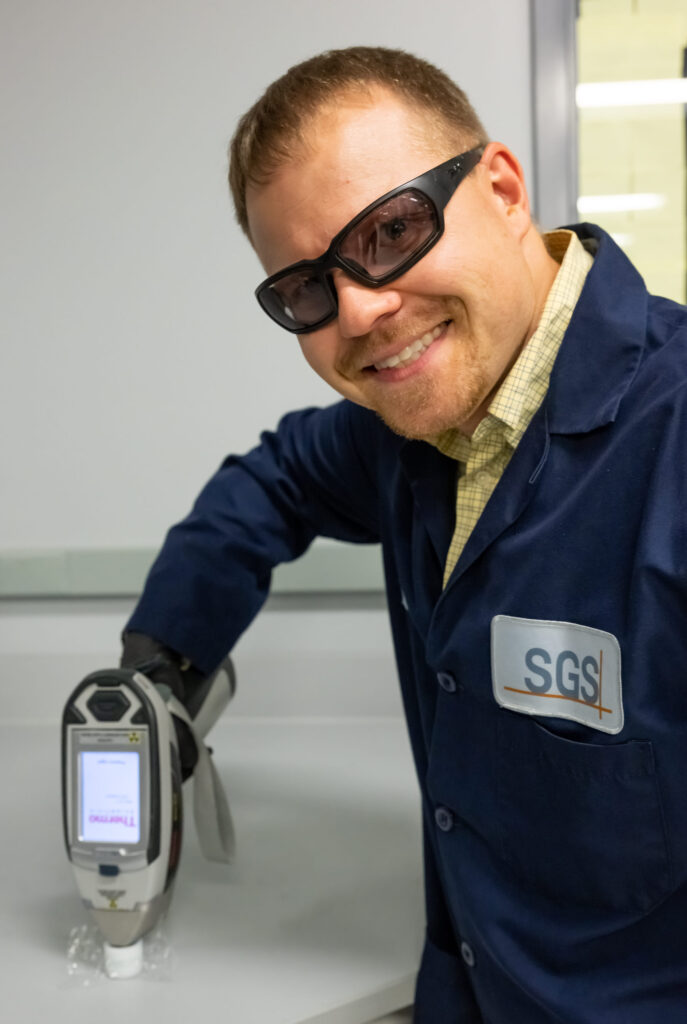
Spectroscopy
X-ray Fluorescence Spectroscopy (XRF) measures the characteristic x-rays emitted from a sample after it has been bombarded by high-energy radiation.
This analytical technique is used to quantify the elemental composition of metal, ceramic, and composite materials. This technique can also be used to quantify the metallic content in a polymer matrix and provides quantitative or semi-quantitative results depending on the sample.
XRF is a non-destructive analytical technique which bombards a sample with high-energy x-rays, which causes ionization of the sample’s atoms and ejects electrons from their orbitals. The ejected electrons are replaced by electrons dropping from other orbitals, and the dropping electrons emit x-rays which have a unique energy level depending on which orbital they originated from and how far they fell. By measuring the energy and quantity of the emitted x-rays, it is possible to determine which elements are present in the sample. XRF can measure elements from magnesium to uranium (atomic numbers 12 to 92).
Approaches
For polymeric materials, samples are analyzed as-received unless they are too thin, in which case they are stacked together. If the sample is a powder or pellet, it can be packed into sample cups to achieve a stronger x-ray signal. Most polymeric materials are tested for RoHS compliance or other metal contamination, as the XRF cannot quantify light elements such as carbon, nitrogen, oxygen, fluorine, or sodium.
For metals, the XRF is often used for alloy identification and determining RoHS compliance. Metals are dense materials and thus very small samples can easily be measured. Metallic coatings can also be measured because the XRF is a surface analytical technique, but it will likely not measure the alloy underneath the coating unless it is extremely thin.
Samples that are very small or that require the quantification of light elements can be analyzed via Scanning Electron Microscopy with Energy Dispersive X-ray Spectroscopy (SEM-EDS)

Sample Considerations
Solid materials are most commonly evaluated using XRF, and they can be: thermoset or thermoplastic materials, rubber materials, metal fragments, or just about any sample which is 3 millimeters in diameter. There isn’t a maximum sample size as the XRF is a handheld device and can be manipulated to measure any large objects.
Homogeneous samples will only require one scan with the XRF. If your sample is not homogeneous, either multiple scans will be required or sample preparation must be done to ensure reliable test results.
If samples are liquid or smaller than 3 mm, our team would like to speak with you about the feasibility of testing it. Contact us to talk through your specific sample considerations.
Experience
Products we’ve tested:
- Soil
- Stainless steel rods
- Foam insulation
- Dental crowns
- Electrical connectors
Work we’ve done:
- Coating identification
- Measuring lead levels in paint and solder
- Elemental comparison of two metal ingots
- Restriction of Hazardous Substance (RoHS) testing
